Menu
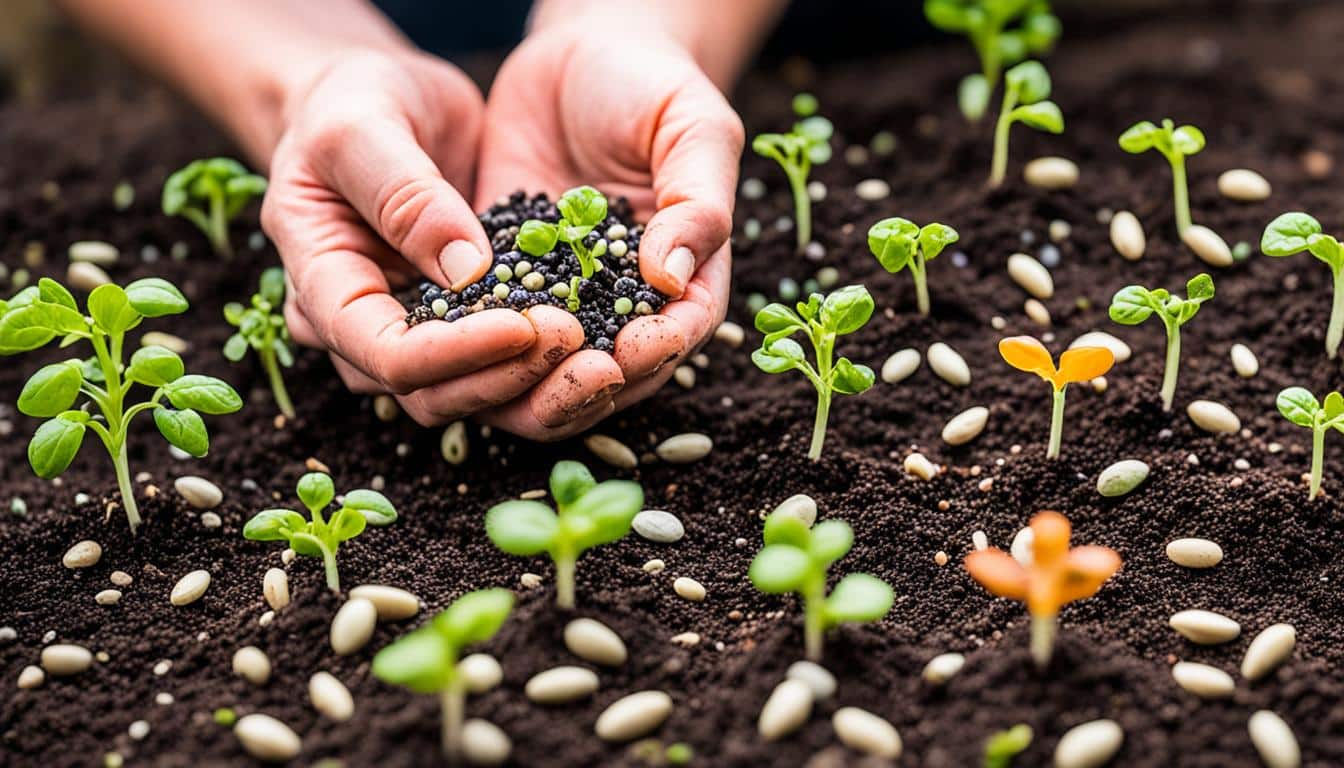
Spring is the best time to overseed warm-season grasses like Bermudagrass. It’s perfect after the grass has turned green. This is usually from late March to early May. The soil is just right for seeds to grow. Choosing the right time makes your garden look great all year.
Spring allows gardeners to refresh their lawns and gardens. Picking the best grass types now ensures a beautiful and strong lawn. Some say picking seeds is easy, but it’s important to think about the type of grass, where you live, and how to prepare. Bad weather and weeds can make things tricky. So, making smart choices matters a lot.
Overseeding in spring is key for good lawn maintenance, especially for warm-season grasses. The best time is when the soil is 65 to 75 degrees Fahrenheit. This method helps your lawn become thicker and more resilient.
Spring is great for planting cool-season grasses. This is usually late summer to early autumn. But in places with mild winters, early spring can work too. It’s all about knowing what the seeds need to grow strong. Testing the soil and preparing it well, like through aeration and the right fertilisation, is very important.
| Soil Type | Temperature Range (°F) | Best Practices |
|---|---|---|
| Sandy | 65-75 | Ensure proper moisture retention |
| Clay | 65-75 | Aeration is crucial |
| Loam | 65-75 | Balanced nutrients with organic matter |
There are many soil types. In fact, Hawaii has over 140 variations. This shows how important it is to treat the soil right for planting. With special soils, detailed analysis and the right fertilisation approach can boost the seeds’ growth. For example, adding organic matter to loamy soil can help plants grow better.
Picking the right seeds in spring is more than just scattering seeds. It’s about knowing your garden and lawn well, choosing the best time, and getting the soil ready. Doing this right can lead to a beautiful, healthy garden. It shows that your planning and work paid off.
It’s vital to pick the right seeds for spring planting. This choice can make your garden stay healthy and grow strong all season. The correct seeds help your garden fight off problems naturally, reducing the use of chemicals.
Companies like Restoration Seeds and Siskiyou Seeds in Southern Oregon offer seeds that fit the local area perfectly. They grow better because they are made for your region. National companies such as Baker Creek Heirloom Seeds and Seed Savers Exchange give you the best seeds for a strong, healthy garden.
There are different types of seeds, each with its own benefits:
It’s good to know about these seed types so you can choose what best fits your area and garden goals. Mixing up the plants you grow helps make your garden varied and able to adapt well.
Seeds that can naturally fight off diseases are a great choice. Look for seeds with details on maturity times, their ability to resist diseases, and if they’re hybrids. You might also consider seeds that have won awards for top performance in different tests.
Choosing seeds that pests don’t like can also help your garden better defend itself. This means less need for chemicals. It’s a win for your garden’s health and the wider nature around it.
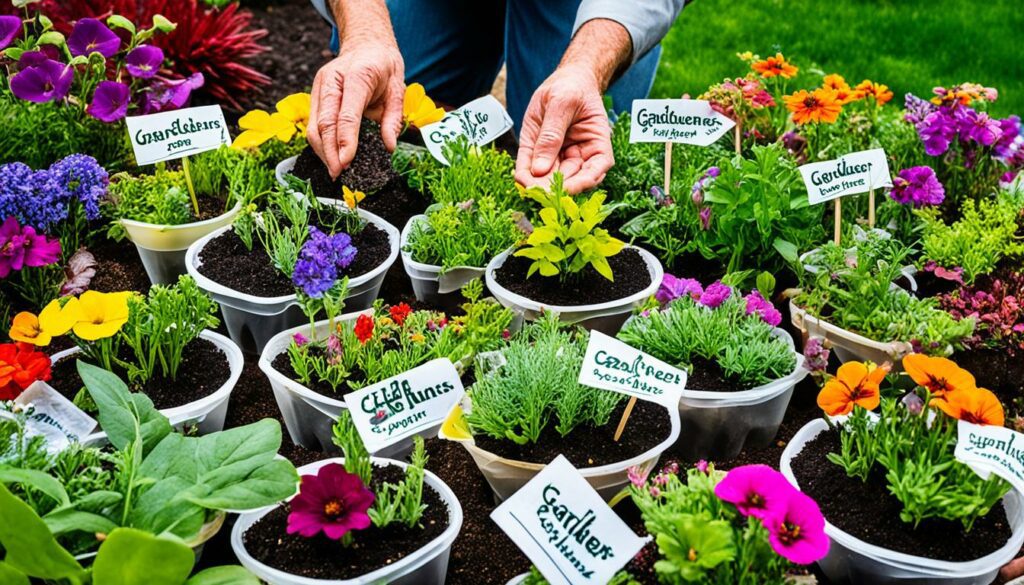
Enjoy the fun of picking out new seeds and trying different types with your family. Most seeds stay good for two to ten years, depending on the species and how they’re kept. Picking seeds wisely is key to a garden that thrives.
Deciding on the seeds for your garden is vital. It will greatly influence your plant’s health and yield. The organic vs non-organic debate is key in eco-friendly gardening. It’s important to know the differences before choosing.
Organic seeds are grown without synthetic pesticides or chemicals. This makes them the top choice for eco-warriors. There’s been a big jump in organic seed creating since 2011. It shows more people are choosing them for their environmental benefits.
Many believe organic seeds are safer for nature and people. In the US, people spend a lot on organic goods, including garden seeds. Although they may not make better plants, they have fewer harmful chemicals. This makes your garden safer for you and the environment.
Non-organic seeds offer a wider variety but might not be as green. They’re designed to grow strong and give big harvests. But, small gardeners usually don’t use genetically modified seeds (GMO).
Some non-organic seeds, like hybrids, might change if you save their seeds. But, their performance can improve with each new generation, becoming more stable. This could mean your garden thrives more with some non-organic seeds.
| Aspect | Organic Seeds | Non-Organic Seeds |
|---|---|---|
| Cultivation | Without synthetic pesticides or fertilisers | May use synthetic pesticides and fertilisers |
| Environmental Impact | More eco-friendly | Less eco-friendly |
| Pesticide Levels | Lower levels of absorbed pesticides | Higher levels of absorbed pesticides |
| Variety | Stable genetics with heirloom options | Wider range of hybrid varieties |
| Cost | Can be more expensive | Generally less expensive |
Choosing seeds, organic or not, depends on your gardening aims and values. Both types have something special to offer. Make a choice that fits your beliefs and you’ll enjoy your garden even more.
Choosing the right seeds is key in flower gardening. Each seed needs certain conditions to grow well. Knowing this can really improve how your garden looks.

Flower bulbs like tulips and daffodils are always loved. They bring bright colours to gardens and can handle changing spring weather. Their beauty in gardens is special, and they’re tough, so they’re often picked for many gardens.
In the planting season, I suggest when to plant based on the last frost:
| Time Before Last Frost | Flower Seeds |
|---|---|
| 10-12 Weeks | Sweet Pea Dynasty, Sweet Pea Jilly, Sweet Pea Jacqueline Ann, Sweet Pea Castlewellan |
| 8-10 Weeks | Snapdragon Sherbet Toned Chantilly Mix, Snapdragon Madame Butterfly Peaches ‘n Cream Mix, Yarrow – Summer Berries |
| 6 Weeks | Strawflower Apricot Mix, Strawflower Candy Pink, Statice Sunset Mix, Chocolate Lace Flower Dara (Queen Anne’s Lace), Basil Mrs. Burns Lemon |
| 4-6 Weeks | Zinnia Lilliput Mix, Zinnia Queen Lime Orange, Zinnia Benary’s Giant Lime, Zinnia Zinderella Lilac, Cosmos Double Click Mix, Lupine Sunrise, Globe Amaranth Pastel Mix |
Eden Brothers has over 600 flower types to choose from. They are the biggest online flower seed seller. It’s really important to think about how each flower will fit in your garden’s environment. So, pick the ones that match the look you want for your garden.
Choosing the right vegetable seeds for your spring garden is key to a good harvest. There are many seed types to consider. Think about what you’d like to grow and what your garden can support.
Spring is perfect for planting leafy greens, peas, and root veggies. Carrots do well in deep soil, best in raised beds. For small spaces, you can grow herbs and lettuces in containers. Make sure to get your seeds early, two to three months before you’re ready to plant. This is usually in March or April, to get the best choices.
It’s important to think about how much space you have and what you like to eat. Buying too many seeds can waste money and cause overcrowding. Mix packs can be a good choice for trying different types to see what thrives best.
Pairing plants well can make your garden healthier and more productive. This is called companion planting. For instance, marigolds keep nematodes off tomatoes. It’s a natural way to help your plants grow better.
Changing where you plant things each year is also smart. This is called crop rotation. It keeps the soil healthy and stops pests from getting too used to one place.
Some older types of vegetables taste better and are very nutritious. Newer hybrid seeds might make more produce and resist sickness. Remembering when you bought the seeds can help you know if they’re still good. With good care, seeds can last 5 to 10 years.
If you choose your seeds wisely and think about how to plant them, your garden will be both productive and eco-friendly.
Spring means it’s time to get the soil ready for planting. It’s the end of winter and start of the growing time. With the weather warming up and days getting longer, it’s perfect for plants. A big part of this is making the soil better through tests. These tests check things like pH and what nutrients the soil might be missing.
Testing the soil helps me know what my garden needs. This lets me choose the best things to add to the soil. I then pick the right fertilisers to help my plants grow strong and healthy.
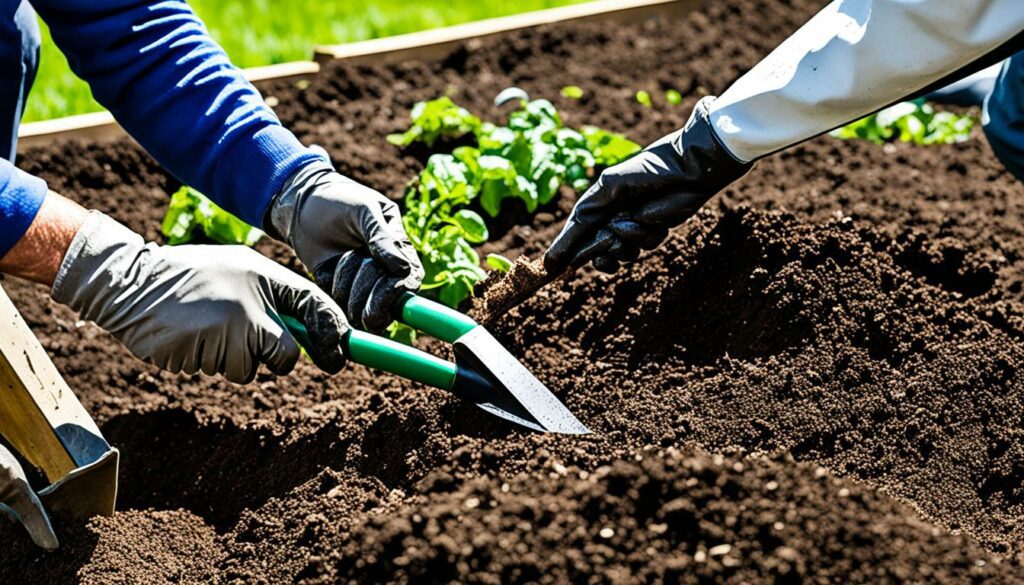
Getting the soil ready also involves getting rid of weeds and junk. This makes sure the soil is clear for plants to grow well. Breaking up the soil makes it light and good for holding water. Adding things like compost makes the soil rich and feeds the plants.
Starting early with good soil can stop bugs and diseases later on. Choosing the right time and plants to grow can help a lot. It makes a garden that fits the place well, giving lots of good food.
Making sure the soil doesn’t get too wet or too dry is key. Doing things like mixing the soil and checking how water moves are important. This keeps the soil ready for planting anytime in the spring. It helps plants grow well all season long.
Gardening tools play a crucial role in planting seeds and preparing soil. They make tasks easier and help plant seeds properly. This promotes the best conditions for seeds to grow. We will look at key gardening tools and how they are used for planting seeds and getting the soil ready.
When sowing seeds, it’s important to be careful and accurate. The right gardening tools make this job easier. Essential tools for seed sowing include:
Soil preparation is key to creating a good environment for seeds. Specific tools are needed for this stage. It includes:
These gardening tools make planting seeds and preparing soil easier. They contribute to a healthier, more productive garden.
Sustainable gardening is gaining popularity. It’s for those who love nature and want to save resources. By using green methods, gardeners can lower their impact on the planet.
One big plus of going green is better soil. The trick of planting different crops at different times, called crop rotation, is key. It stops the soil from getting tired by the same crops. For instance, plants like peas boost the soil’s nitrogen levels, making it more fertile.
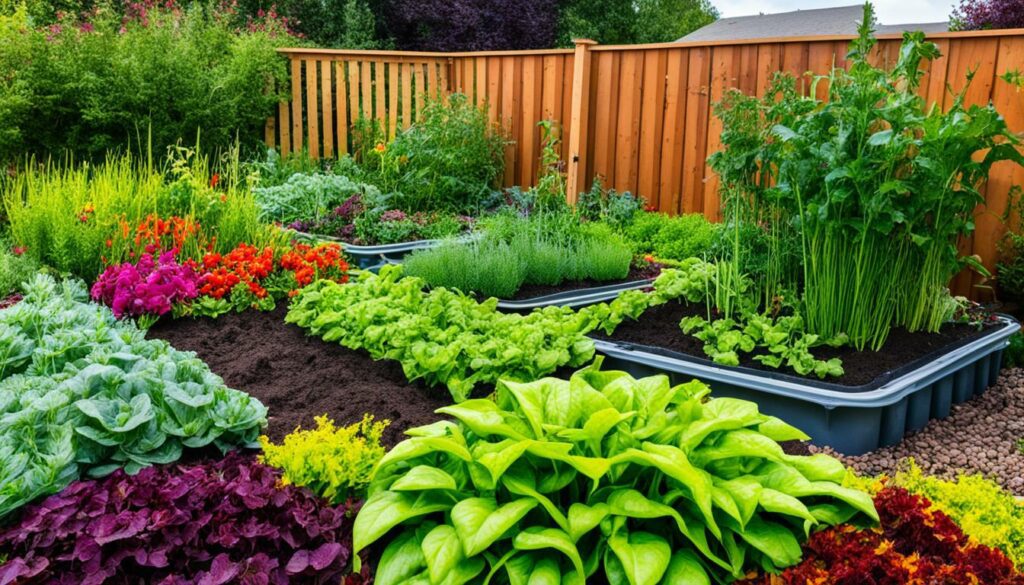
This method also throws off bugs and plant diseases. This means less need for chemicals. Plus, it makes the soil strong and balanced. That’s great news for plant health.
There are many ways to garden sustainably. First, pick plants that naturally thrive in your area. They need less water. This helps save water and reduce the need for watering gadgets.
Compost your food scraps to make the soil healthier. Water-saving tools like drip systems are smart choices too.
Adding plants that help bees and butterflies is good for a strong ecosystem. Avoiding toxic sprays keeps your garden safe for all.
Check your soil’s health with a test. This shows what plants will grow best. Knowing what to plant where can help keep the soil and plants in good shape.
Following these steps will not only make your garden flourish. It also helps everyone around by being kind to the environment.
Starting spring seed selection can seem hard. It faces unique weather challenges and other problems. To make seeds grow well, you need to plan carefully and act ahead to beat these issues.
The weather in spring is often unpredictable. Cold snaps and heavy rain can stop seeds from growing well. You must watch the weather and prepare to handle these weather challenges. If rainfall is missing, provide one and a half inches of water weekly for your new seeds or grass to grow strong during the season.
In spring, weeds and pests will always show up. Areas with new plants are at high risk. So, it’s key to stop these problems before they start. Don’t tackle invading weeds until your new grass has been cut three to four times. This approach prevents harm, especially when it’s hot and dry.
Using natural methods to control pests can keep your plants safe and protect the planet. These could be releasing helpful bugs or using eco-friendly pest repellents. Such steps really work.
| Challenge | Solution | Timeframe |
|---|---|---|
| Dead patches | Renovation using core aeration & overseeding | 6-8 weeks for bluegrass to fill a 12-inch diameter |
| Unseasonal Weather | Provide 1.5 inches of water per week | Throughout the growing season |
| Weeds | Wait until mowing new grass 3-4 times | After establishment of new grass |
| Pests | Adopt natural pest control techniques | Continuously monitor |
| Nutrient Deficiency | Apply complete fertiliser every 4-5 weeks | Throughout the season |
To fix thin or damaged lawns, go for core aeration & overseeding, or try liquid aeration & overseeding. Both can bring your garden back to life. You can also work with professional gardeners. They promise good work, helping you win over your spring gardening problems.
When you plan your planting, think about each plant’s growth cycle and how it adapts to the weather. Getting the timing right is key for a successful garden.
Peas can go in six weeks before the last frost, and beets four weeks before. If you plant on the last frost date, beans and corn are good. However, melons, pumpkins, and squash are better off if you wait two weeks after.
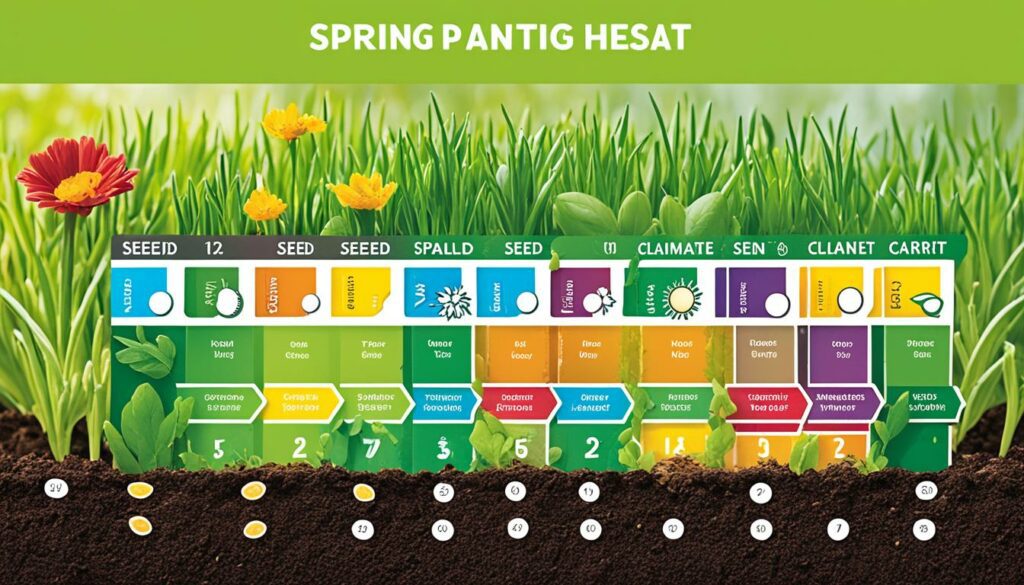
Starting seeds indoors ahead of time is important, too. Onions need 10 to 12 weeks of indoor growing. For herbs, rosemary and parsley might need up to 12 weeks before moving them outside.
Sorting seeds by when they should be planted makes it easier to get things done. Some gardeners use different containers for this. It helps save space and keeps their seeds organised. Plus, taking photos of the seeds helps keep track of them and their variety.
By sticking to nature’s timetable and the best planting practices, your garden can truly flourish. Carefully following these tips ensures a strong start for your garden this spring.
After the fun of planting, it’s vital to look after your garden. This means watering regularly and fertilising correctly. These tasks help your plants grow strong and healthy.
Keeping up with watering is key to a successful garden.Newly planted seeds need moisture to sprout. Yet, don’t overdo it. Too much water can damage plants by causing root rot. Check the soil often to see if it’s dry, then water deeply but not too often to help your plants grow strong roots. Mulch is your friend; it keeps moisture in and stops too much evaporation. Remember, different plants have different water needs. While some like their soil to be a bit dry, others thrive on regular watering.
Fertilising your garden is very important. It boosts your plants’ growth and health. Start by testing your soil to learn what nutrients your plants need.Choose natural fertilisers that don’t release nutrients too quickly. They also help improve the soil over time. Avoid synthetic fertilisers when you can. They might cause nutrient issues or too much salt in the soil. Change how you fertilise as the seasons pass. For example, use compost in the spring to get the soil ready for summer.
Here are some important steps:
To wrap things up, taking good care of your garden with the right water and fertilisers is key. With care like this, your garden will flourish. It will be both beautiful and full of life.
Getting top-notch horticultural supplies is vital for a great spring planting. If you buy from trusted vendors in gardening, you’ll find the best materials, seeds, and tools. This guide will show you what to look for to make the best choices.

Choosing the right gardening vendors is key for your garden’s success. I suggest trusted online seed companies like White Harvest Seed Company and Baker Creek Heirloom Seeds. They offer great seed quality and a wide variety. You also get a lot of information on the plants and they are known for growing well.
If you want to save money and get unique seeds, consider joining seed swaps. Yet, remember there’s a chance these seeds might not grow as well. Local nurseries give helpful advice and seed options that suit your area. They offer seeds similar to big stores but with better local knowledge.
Determining whether to shop online or at a local store relies on your gardening needs. Online shops give you a big selection, but sometimes seeds don’t grow as well. Local farmer markets and co-ops sell seeds that are proven to grow well in your area.
Online options are great for finding specific or unusual seeds. But local stores can provide hands-on advice and are good for essentials like netting. Even stores like Home Depot sell special gardening tools, like Tenax HortNova netting, to meet various gardening needs.
| Vendor Type | Advantages | Challenges |
|---|---|---|
| Online Seed Companies | Wide selection, high germination rates, detailed crop information | Potential shipping costs, no tactile inspection |
| Local Nurseries | Personalised advice, region-specific seeds, immediate availability | Limited variety, similar sourcing as big box stores |
| Big Box Stores | Convenient location, decent selection | Lower germination rates, generic advice |
| Seed Swaps | Cost-effective, community engagement | Lower inspection quality, variable germination rates |
| Feed Stores & Farmer’s Co-ops | Economical for bulk purchase, regionally adapted seeds | May lack rare or specialty varieties |
Seasonal planting makes a garden more productive. By aligning with the seasons, you make the most of your garden. This ensures you get crops all year long.
It’s great because plants grow naturally at the right time. Spring plants, like vegetables and flowers, have enough time to grow fully before the cold hits. This smart planning boosts your garden’s output.
Each season offers different conditions for crops. Spring planting thrives on mild weather and rain. This time of year is perfect for many plants to grow well.
There are challenges like weather, pests, and diseases that can hurt your crops. But you can help your plants by preparing the soil right and choosing the best seeds. This ensures your plants get what they need to be healthy and strong.
Over time, planting in spring has become part of our culture and history. These practices often teach us to value nature and help us feel better. Being in the garden like this can lower stress and improve our mood.
In the end, smart gardening through the seasons means more than just getting crops all year. It makes your garden a lively and fruitful place. Using what nature gives us wisely can really make our gardens flourish.
The journey to successful gardening starts with careful selection of spring seeds. January is key for garden planning. It gives time to prepare for a beautiful and fruitful spring garden.
In January, it’s good to pick seeds and order what you need to plant. You can also test the soil to make sure it’s ready for your plants. This helps your plants grow strong and healthy.
When choosing seeds, think about what you like and what’s possible. It’s good to talk to seed companies early. This way, you can get the seeds you need for the coming warm months.
To ensure your plants grow well, it’s important to prepare the seeds right. By mimicking winter in how you store and prepare seeds, you help them grow better. This also helps nature, making your garden and the environment around it thrive.
By planning carefully, choosing the right seeds, and using the best tools, your garden can be full of life all year round.
Overseeding makes your lawn thicker and tougher. It’s best done for warm-season grasses when the ground is 65 to 75 degrees Fahrenheit. This helps the seeds sprout and grow well.
Getting the soil ready, like testing it and adding nutrients, greatly improves plant growth. This means your garden will be more colourful and healthy. It’s a key step before planting in spring.
Picking the right seeds for your area, ones that resist pests and diseases, makes your garden stronger. It means you won’t need as many chemicals to keep it healthy.
Organic seeds are grown without harmful pesticides. This makes your gardening better for the planet. It helps reduce your garden’s carbon footprint.
Tulips and daffodils are great for spring gardens because they’re reliable and colourful. Pick types that suit your area and soil for the best results.
For spring, go for leafy greens, peas, and root veg. They do well in the cooler weather of spring. You’ll get a good harvest from them.
You’ll need seed spreaders, aerators for the soil, and tools like rakes and tillers. These help get the soil ready for seeds to grow well.
Sustainable gardening helps nature, uses less resources, and avoids harmful chemicals. It makes your garden a healthier place and supports wildlife.
Bad weather, weeds, and pests can harm your seeds. But, you can beat these challenges by using natural ways to keep pests away and planting smartly.
Plant when the weather and your seeds’ needs match. Not too early or late. Doing this right helps your plants start strong.
After planting, water and feed your plants right. Keep an eye on them for any problems. This way, they’ll grow healthy.
Look for supplies from good sellers. You can find them online or at local stores. Think about what’s most convenient and offers the best choices for you.
Planting for each season lets you harvest all year. It uses nature’s growth cycles for best results. You’ll enjoy various crops and flowers that succeed at different times.